Oh, you’re here to talk about rat breeds? Great choice!
As a fellow rat enthusiast, I can tell you that these little critters are some of the fascinating pets around. From the tiny and adorable Dwarf rats to the regal and impressive Rex rats, there are many breeds to choose from.
As an expert in all things rat-related, I’m excited to share my knowledge with you and help you find the perfect breed to add to your furry family.
So, let’s dive into the wonderful world of rat breeds together!
Check: Rats Sleeping Behavior
Table of Contents
7 Rat Breeds You Need to Know
From my research, I’ve broken down the rat breeds into seven main categories: Standard, Rex, Hairless, Tailless, Dumbo, Satin, and Marked.
There are also new varieties that are being discovered all of the time and breeds that do not fall into any specific category.
Some breeds fall into multiple categories, so I will not confuse you.
1. Standard Rat (Fancy Rat)
The Standard or Fancy Rat is the most common rat breed and the rat you will most commonly find as a pet. They are easy creatures to care for, have lovely intelligence, and are loyal and friendly.
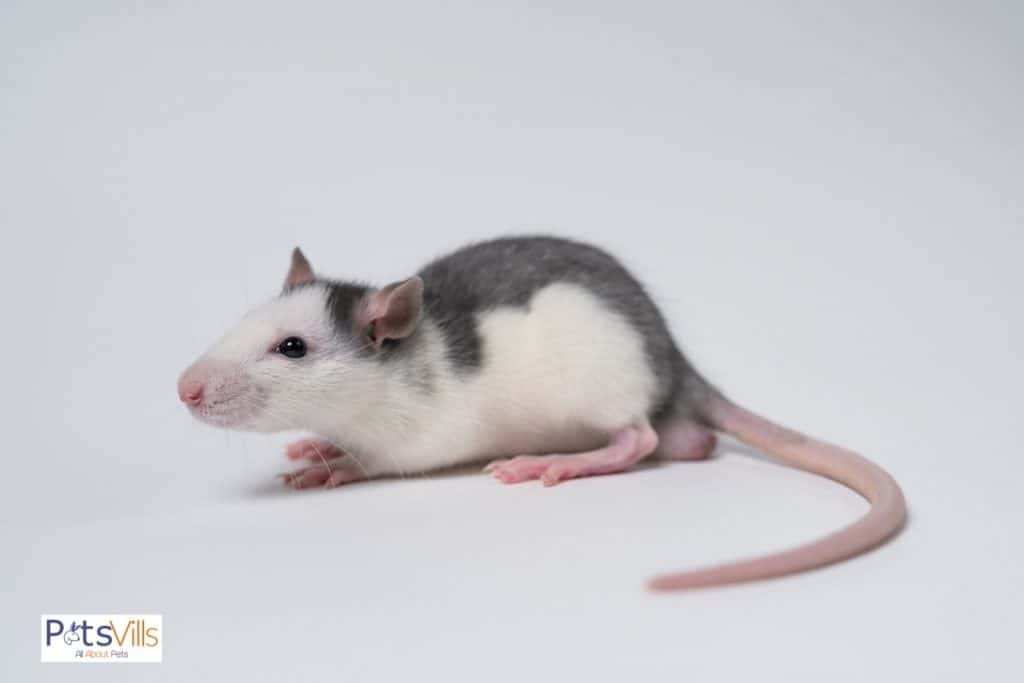
They are a direct descendant of the Norwegian Brown Rat but are a lot nicer to have around. They were once bred for sport but soon became domesticated animals.
While they have the same keen intelligence as their wilder counterparts, they are extremely friendly, docile, and great around adults and children.
Many of these domesticated rats have retained the original markings of the brown rat and come with an agouti coat.
An agouti coat contains three shades of brown on each hair. They can also be found in a variety of colors and various markings. They have thick, coarse coats and can have multiple colors of eyes [1].
Fancy or Standard Rats make excellent pets for everyone. On several occasions, I’ve had them as pets (black Fancy Rat and blue Fancy Rat) and had no issues.
You’ll have difficulty finding a more suitable pet rat than this breed. I’d recommend them to any first-time owner or newbie.
They do not need much care and attention but thrive when they get a lot of social interaction with their owner. So they will start as your pet and soon become your friend.
READ MORE: Everything About Albino Rats
2. Rex Rat
The Rex Rat has been around since the mid-1970s and its most distinguishing feature is its curly whiskers.

People are drawn to the cute-looking whiskers and the often plush and curly coat. I immediately fell in love with the whiskers of my blue Rex Rat.
After all, these little critters look like tiny, little sheep at their curliest. It’s just a level of adorableness that makes it hard not to love them.
The hair can come in different colors, and the density of the curl will change from rat to rat. When born, they have thick, curly hair, but it falls out in the first several weeks.
It’s then replaced by adult hair soon after this falling process ends. You’ll be able to identify this adult hair through it having a slight ripple, a tight curl, or can even be patchy.
Lastly, Rex Rats are curious and intelligent creatures and can be taught to perform simple tricks. It’s another reason I love having these fluffy rat breeds as pets.
3. Hairless Rats
Hairless rats are precisely what you would expect; they have no hair.
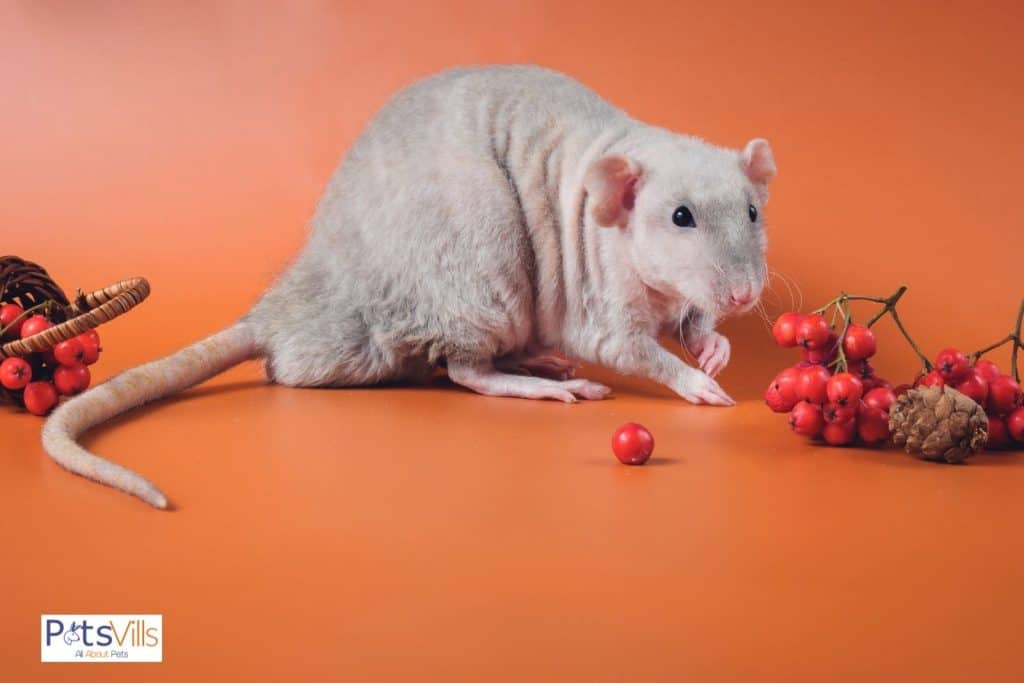
They can have small tufts of hair, mainly around the feet and nose, and are still classed as Hairless. So, I would say that Hairless Rats are mostly hairless.
But some rats do live up to the hairless name. A true Hairless Rat, such as the Sphynx Rat, has no hair: no hair around the feet, nose, and not even whiskers.
As you can imagine, a Hairless Rat will be very pink. It was quite an eye-opening experience when I first came across this very pink rat.
It certainly wasn’t what I was expecting during my first encounter. The skin under a rat’s coat is pink, so a rat without hair will let you see it in all of its glory.
Another notable trait of its skin is smoothness. These rats love to be petted as much as rats with a coat do.
Hairless rats are also the perfect pet for those with pet hair allergies to pet hair. For instance, my sister is deadly allergic to pet hair, so she got a hairless rat and couldn’t have been happier.
As for their behavior, Hairless Rats act and behave like any other rat. They need the same care and attention as any other breed and are as friendly and intelligent.
Take a look at this video to learn more about them:
4. Tailless
Tailless Rats are another relatively self-explanatory breed. But, shockingly, I have to report that these rats have no tails.

This lack of tail doesn’t affect their behavior patterns or other personality traits. Instead, Tailless Rats are like every other rat, except without a tail.
You’ll often find people refer to this breed as Manx Rats. It’s just another name for the species, which I suspect comes from Tailless Rats sounding a little unappealing.
Tailless rats also distinguish themselves by having a higher level of care needs—their lack of tail results in additional health issues due to the loss of balance and temperature regulation.
Owners will need to pay attention to these issues if they intend on getting one. But in any case, Tailless Rats make lovely pets.
These rats are known for having the same intelligence and loyalty as all other rat breeds. They’re also wonderful around adults and children and will form a bond for life [2].
Look at this adorable tailless rat:
5. Dumbo Rat
The Dumbo Rat is one of the rat’s most recognizable and striking breeds. It’s also got the more fun name of all these main breeds.
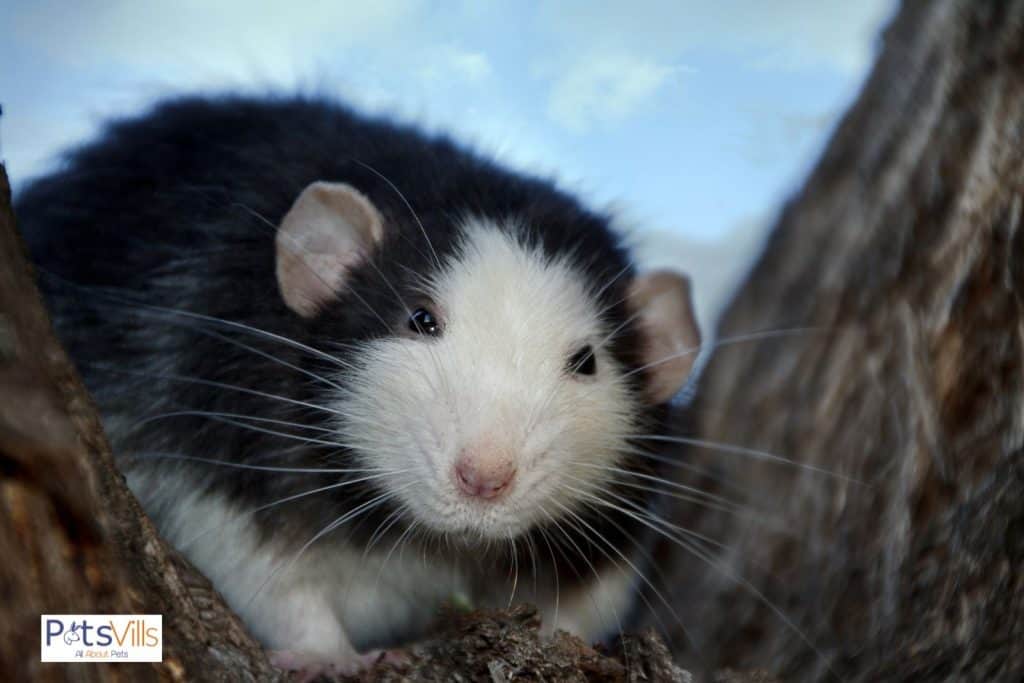
But the appearance makes these adorable rats stick out from the pack. The Dumbo Rat has large, round ears, mimicking that of the famous large-eared elephant.
It’s vastly different from the oval-shaped, top-ear rat seen on most breeds. You’ll also discover that Dumbo Rats are low-maintenance rats with minimal care needs.
So I often recommend them as an excellent rat for small children. But I will always suggest adult supervision when young kids handle small pets.
They are also among the cutest small animals you will meet. It has made them even more popular, especially the gray Dumbo Rat (my favorite of the Dumbo Rat colors).
Due to their cuteness, many call these fluffy rats the ‘teddy bear rat.’ On a similar note, they’re sweet, friendly, and loyal.
6. Satin Rat
Satin Rats are known for their silky and shiny coat colors. Other common indicators include long, curly whiskers and metallic overall look.

Their metallic appearance is a result of the Satin coat’s natural sheen. It creates quite a look compared to what you usually expect from a rat.
Owners also often comment on their coat’s overall length. It’s much longer than other regular rat breeds.
All in all, there is no mistaking a Satin Rat when you see it alongside another rat breed. Its rat coat patterns are distinct, delightful, and a sight to see. [3]
These traits are why Satin Rats make for popular pets, and adults and kids love to pet them. They are great and loyal pets for almost any potential owner.
7. Marked Rats
Our last traditional rat breed is called marked rats. These types are known for their ability to do well in pairs and thrive when you spend much time with them [4].
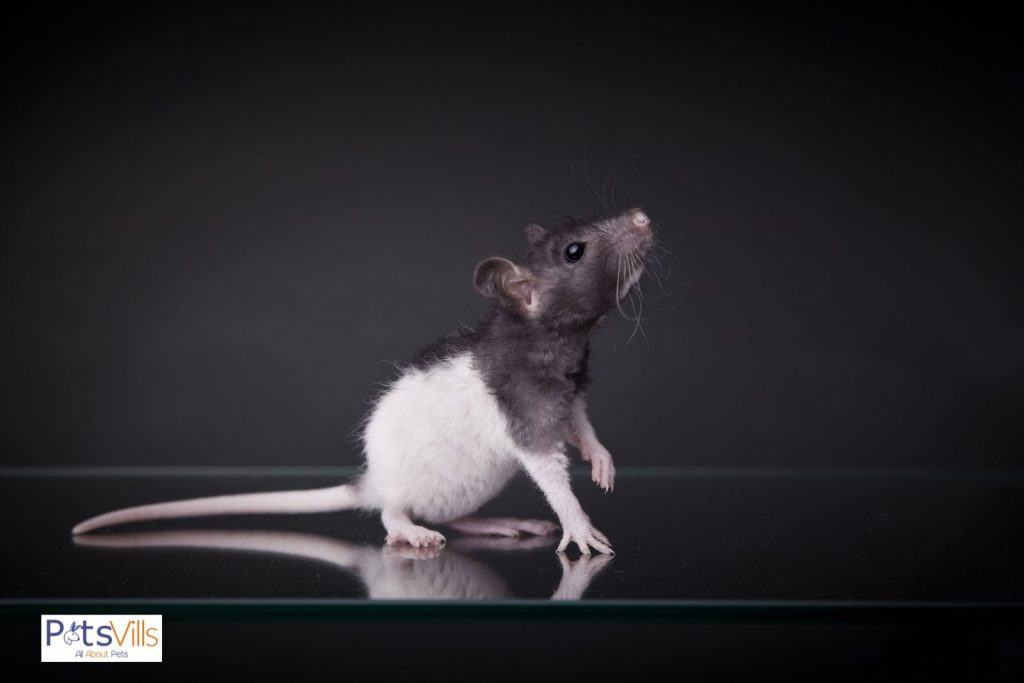
As for their appearance, Marked Rats have markings (who would have thought?). They most commonly display two colors, creating different rat fur patterns on the coat.
They come in many different colors of rats, including the capped (solid white body with a color covering the head) and Irish (white triangle on the chest with white feet).
Marked rats behave the same way as any other rat breed. So how you care for them is the same.
I’ve found them even easier to care for than other breeds. Their willingness to be around and trust people is on another level.
5 Other Varieties or AOV
The rat breeds above are the main breeds you will find, though there are others. However, a wide range of varieties isn’t recognized by the breed standards of kennels.
You’ll find them referred to as “AOV” or Any Other Varieties. It’s a catch-all term to deal with all the unrecognized breed possibilities, characterized mainly by rat colors.
But it doesn’t mean these breeds don’t matter. These breeds may become popular enough that they’re recognized as main breeds.
So I decided to discuss some of them before selecting your new rat. It’ll ensure you’re entirely informed about all the possible rat breeds!
1. Silver Fawn
Silver Fawn is easily among my favorite rat varieties. It’s also one of the more well-established, one of the oldest.
In fact, its history goes back quite far, with it being known as Argenté. But the history isn’t what draws me to this particular rat variety.
Instead, I loved its silver color guard hairs and orange coat color. It’s a much more exciting look than a traditional grey pet rat.
Sadly, I haven’t been able to locate one for my home. But it’s on my to-do list because I love the look of Silver Fawn rats!
2. Quicksilver
Quicksilver rats are an exciting variety with their platinum coat coloring. It ends up looking like a bright blue-gray and doesn’t have any brown or creamy color tones.
As a result, the appearance is a popular one among rat owners. I can’t argue with them as I love how it looks on my rats.
It’s worth noting their feet are a gray color, as well. Owners can identify their rats as Quicksilver through these feet and platinum coat colors.
3. Powder Blue
Powder Blue Rats have a light blue color. It’s one of my favorites, creating a distinctive look for a rat.
I’ve even been lucky enough to have a few powder rats as a rat owner. They often left my guests to ask about their coloring, which doesn’t happen with other rat types.
I’m also fond of their ruby or black eyes. Both eye colors are my preferred options when looking at various rat species.
4. Champagne
Champagnes are an undervalued variety by breeders and pet owners. After all, most have a subtle shade of gray/white and pink eyes.
But some champagnes have a darker gray shade that produces an appealing look. These beautiful rats deserve a lot more attention from potential owners.
@friendlyratforecast everyone say hello to 🌀Cyclone🌀 #rats #rattok #ratsoftiktok #pets #petsoftiktok #animals #cute #funfacts #fyp #foryou #foryoupage ♬ FEEL THE GROOVE – Queens Road, Fabian Graetz
5. Albino Rats
Their white hairs and pink eyes identify albino rat strains. It makes a striking appearance especially compared to a standard black-and-white pet rat.
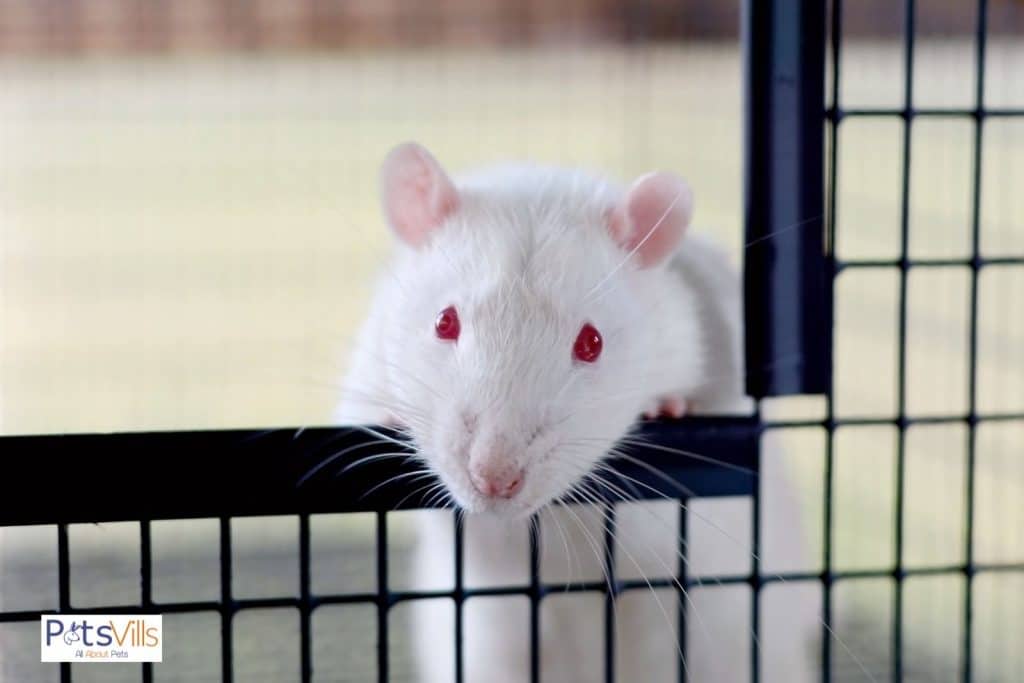
But besides their appearance, these rats won’t be different from a regular breed. The only slight difference is Albino strains do require a bit more cleaning.
Their white fur from the albino mutation gets much dirtier than other types of rats. So it becomes difficult to keep them clean, especially if you aren’t used to them.
FAQs
#1 What is the friendliest rat breed?
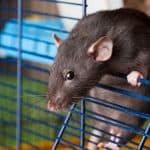
Dumbo rats are often considered the friendliest rat breed. It’s another reason why Dumbo Rats are such a sought-after pet.
#2 Should I get 1 or 2 Pet Rats?
Getting at least two rats is always a good idea because they’re social animals. They’re much more likely to adapt with a friend by their side.
#3 What Kind of Rat Do I Have?
The easiest way to identify your rat is by its tail. So please look at its tail and compare it to breed descriptions to see where your pet falls.
Conclusion
In conclusion, rat breeds are a diverse and endlessly fascinating animal group that makes fantastic pets. Whether you’re looking for a small and cuddly companion or a more enormous, more regal-looking rat, there is sure to be a breed that suits your preferences.
With their intelligence, playfulness, and affectionate nature, rats make excellent pets that will bring joy and happiness into your life.
But don’t just take my word for it – why not consider adopting a rat and experiencing the joys of rat ownership for yourself?
Whether you’re a seasoned pet owner or a first-time rat parent, there’s nothing quite like the love and companionship of a furry little friend.
So, what are you waiting for? Why not start your rat ownership journey today and discover the joys of sharing your life with one of these fantastic animals?
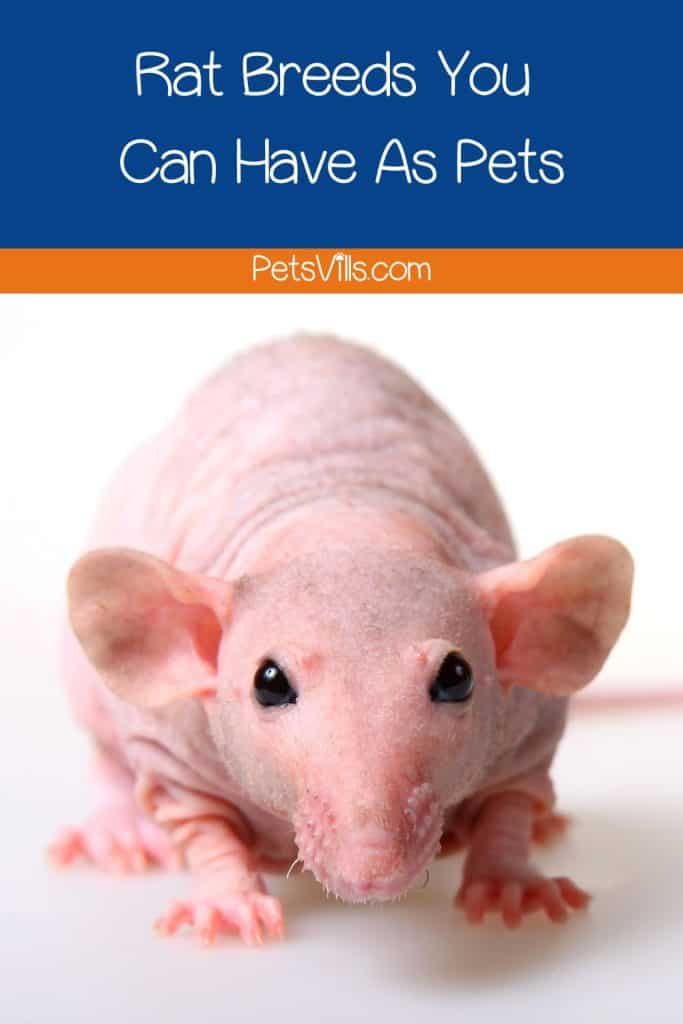
What are your favorite rat breeds? Which one do you have? Let us know in the comments below!
References
- 1. gw @actamail.com A / T design: GW / J 8 2006 / Email: AFRMA Fancy Rats – Marked [Internet]. www.afrma.org. [cited 2023 Apr 12]. Available from: https://www.afrma.org/ratmkd.htm
- 2. AFRMA – Tailless Rats [Internet]. www.afrma.org. Available from: https://www.afrma.org/taillessrats.htm
- 3. AFRMA – Satin Rat Photos [Internet]. www.afrma.org. [cited 2023 Apr 12]. Available from: https://www.afrma.org/satinratpics.htm#:~:text=Satin%20rats%20are%20distinguished%20by
- 4. AFRMA – Fancy Rat Genes, Marked [Internet]. www.afrma.org. [cited 2023 Apr 12]. Available from: https://www.afrma.org/geneticsmkdrat.htm
Alina Hartley is a small-town girl with a ginormous love of bearded dragons. It all started with Winchester, a baby bearded who was abandoned at the shelter by his former owners because of a birth defect that caused one front leg to be shorter than the other. Alina originally went to the shelter looking for a guinea pig, but one look at Winchester and it was love at first sight. From that day on, Alina has dedicated her life to learning everything she can about bearded dragons. She loves helping new beardie parents start their incredible journey with these magnificent reptiles.
Follow her on:
LINKEDIN
TWITTER.
Read her latest articles HERE
Learn more about her HERE.

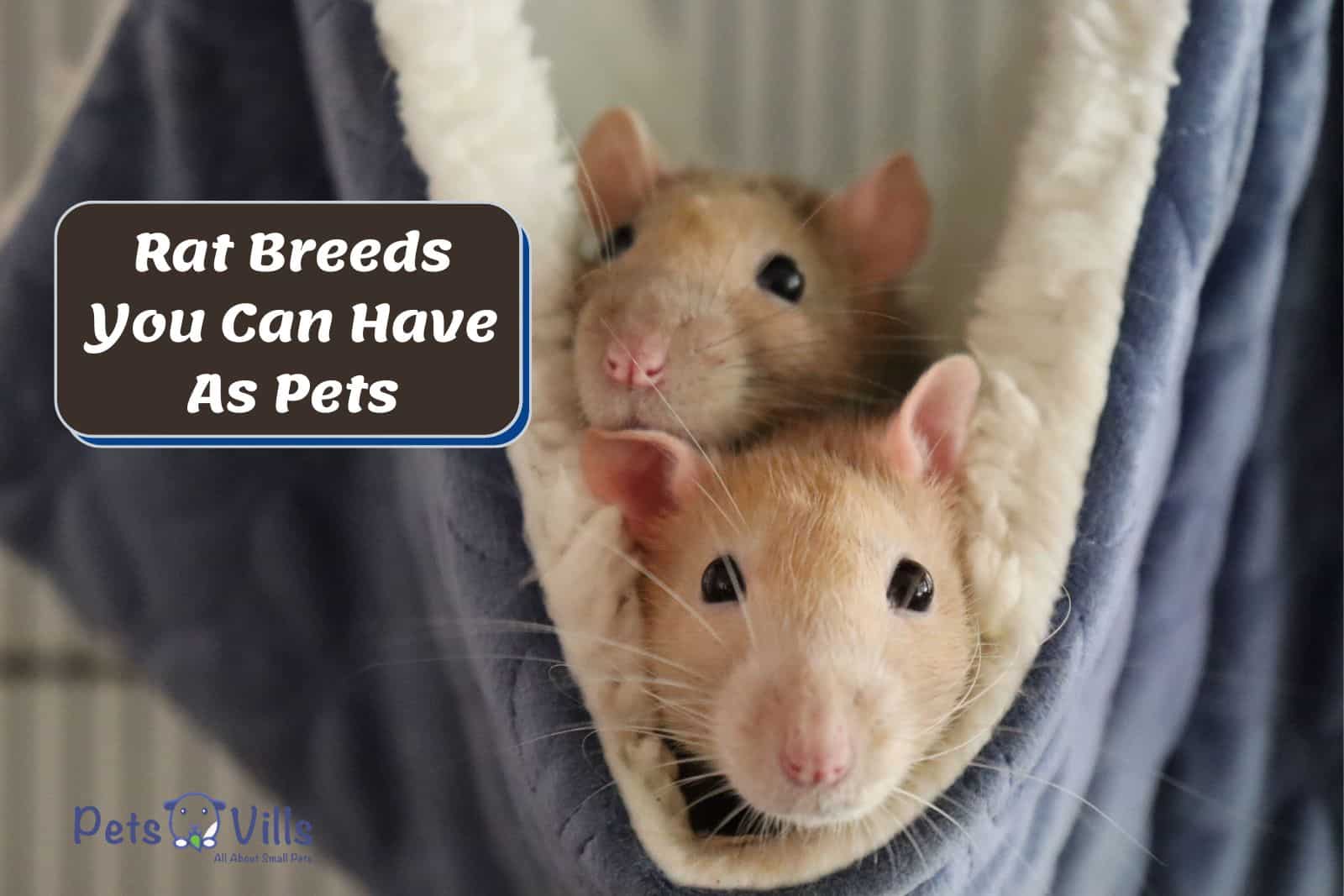

![7 Best Rat Foods for a Balanced Diet [Review]](https://petsvills.com/wp-content/uploads/2022/03/Best-Rat-Foods-Of-2021-211x150.jpg)
![11 Best Rat Toys That They Will Enjoy [Review]](https://petsvills.com/wp-content/uploads/2022/02/best-rat-toys-211x150.jpg)
